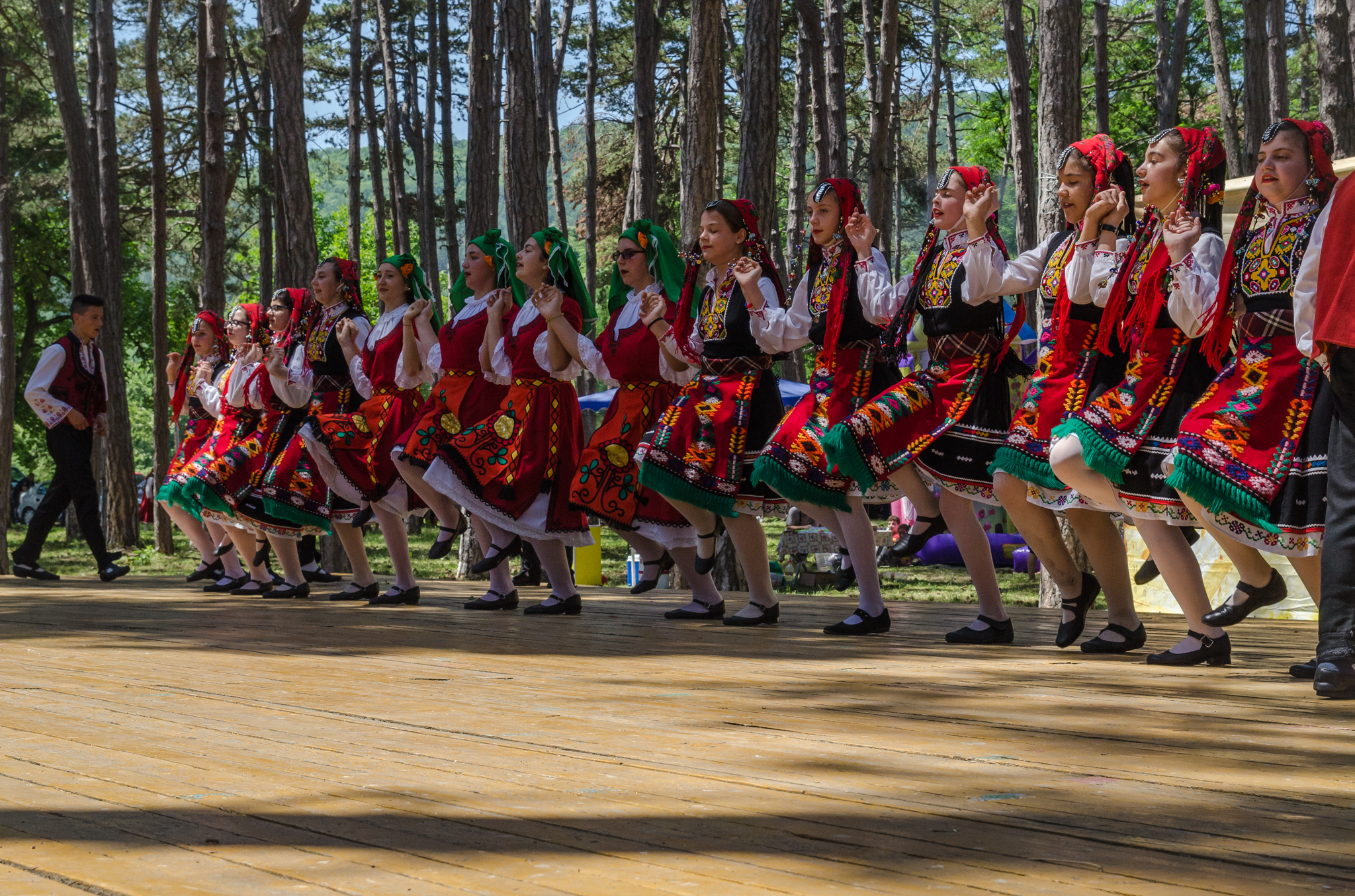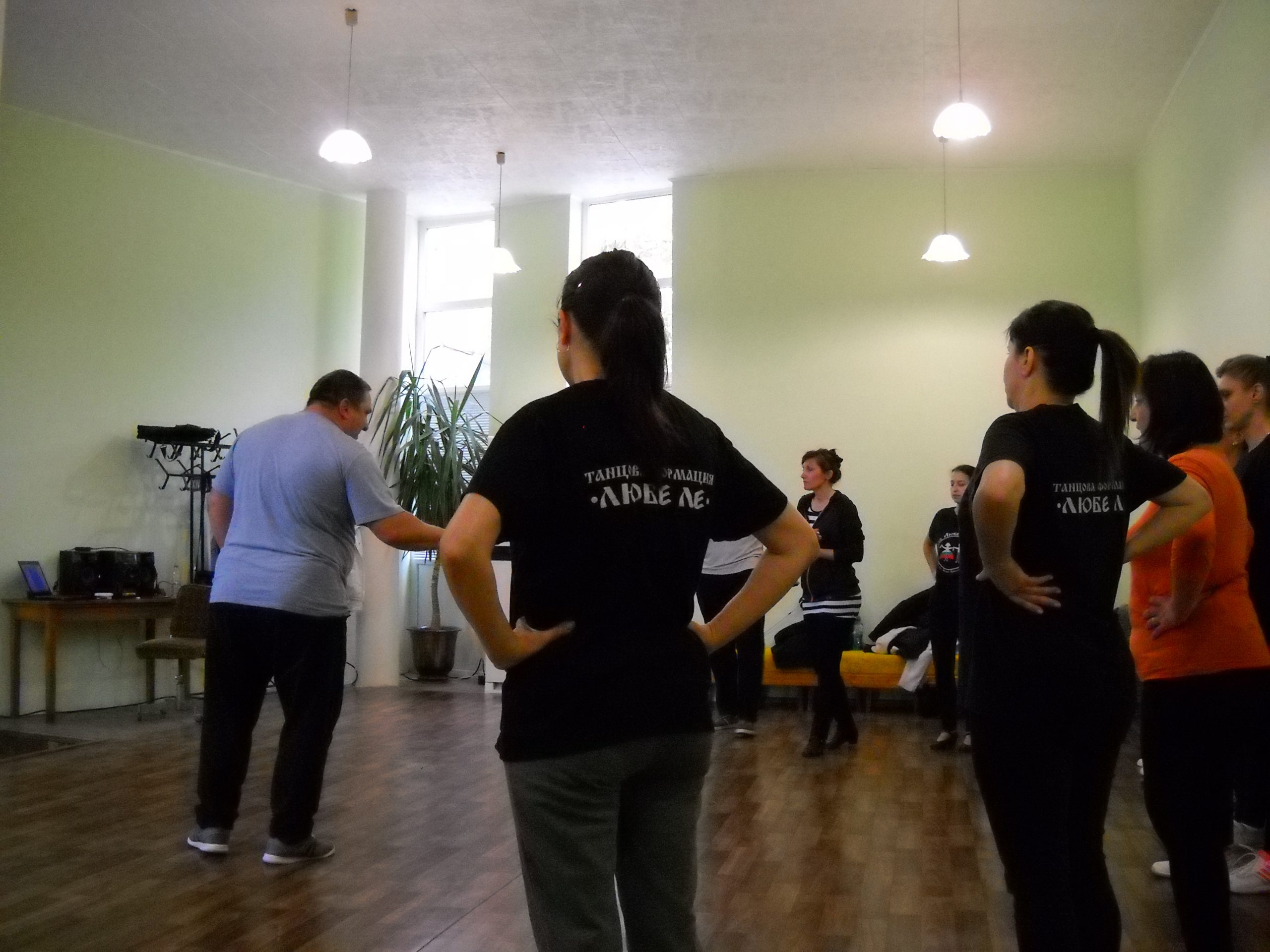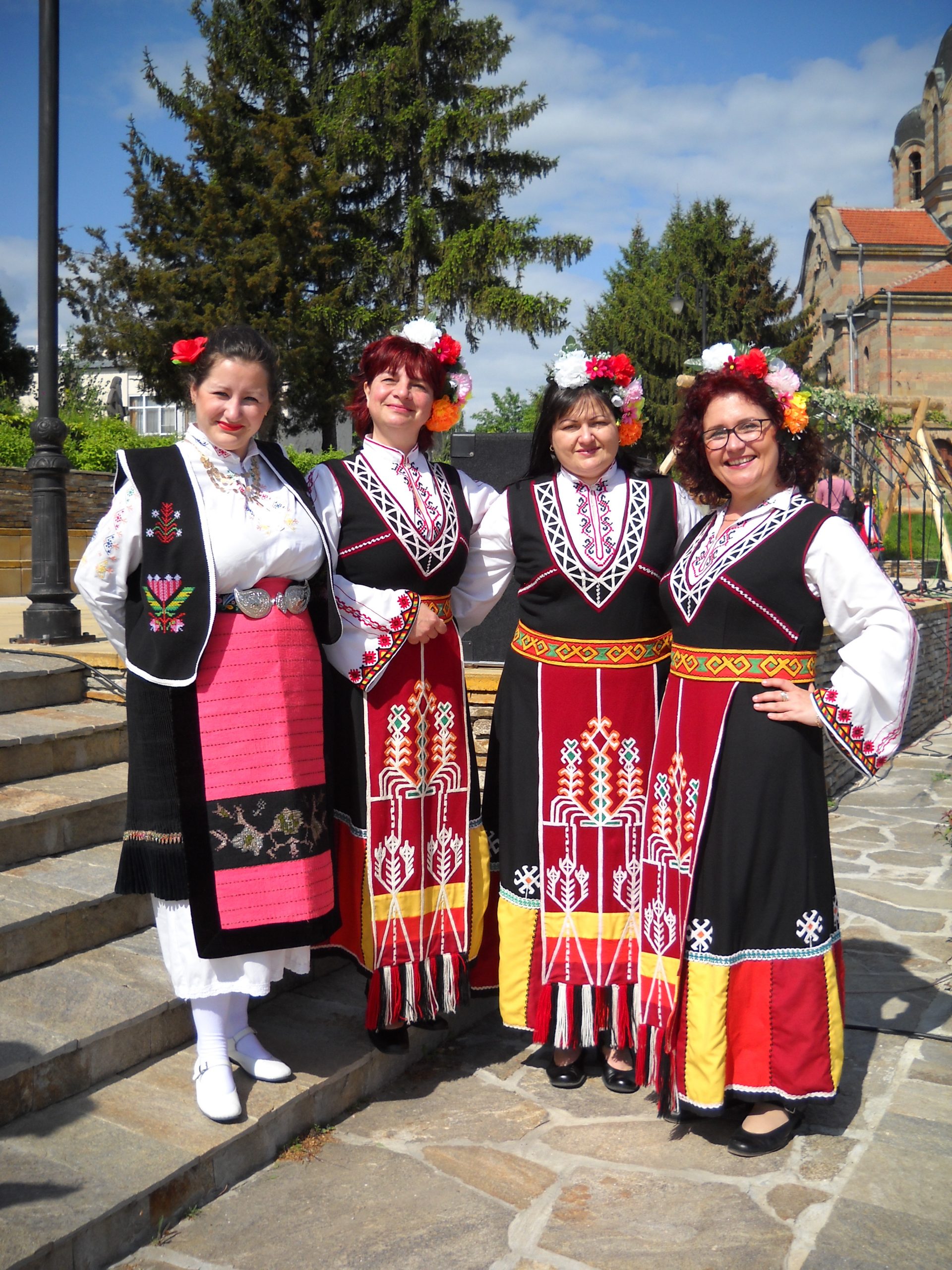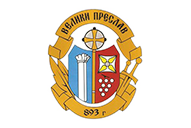BULGARIAN FOLK DANCES
Welcome to the heart of traditional dances
Their main characteristic is their asymmetric measurements, built around various combinations of short and long time. These dances are present during public ceremonies, celebrations but also at all times of life. It is not uncommon to see Bulgarians dancing in restaurants.
She is known for their cheerfulness and fast pace. There are different styles of dance but the most common are “Horo” and “Ratchenista”.
The “Horo” is an open circle dance in which people hold each other by their hands or belts.
The “Rutchenitsa” is a line dance or often a couple dance that offers many possibilities for improvisation.

Folk Dance "Petrovska Kitka", 2018 edition, Preslav / ©Hunt On Photos Studio
South-Western region, called « Pirinska, Makedonia », the dances consist of tall, jumpy, springy and kneeling movements. Macedonians step lightly, flexibly , with spins and sharp stops.
Rhodopi region, the dances are in a slow and moderate pace, with less complexity and variety of movements
Thracian region, the dances are very varied. Men’s play is typically the louder performance, where squats, jumps, fights and hand claps are most common. The game of women is more relaxed, gentle and graceful. The ruchenitsa is very typical of this region. The Thracian folklore area is the most extensive of all areas. It also includes an interesting, specific sub-region – the Strandzha region. The horos of Strandzha are crazy, wild, rampant, gentle, subdued, with easy but varied steps.
Dobrudzha region, the dances are is played freely, confidently, with most movements pointing down to the ground (squating, bending over, sitting). This symbolizes the connection of the Dobrudzhan with the land that provides him with food and its fertility. There are also many movements with hands and shoulders. The movements of women symbolise the movement of the grain in the wind.
Nothern region, the largest area. Northern Dances are characterized by their speed and originality.
Shoppska region, It is characterised by the most specific and difficult movements, because of the speed of the dance and the amount of energy needed to dance so many steps in a short small amount of time. The most characteristic the dances here is the “crushing” of the body. The cheerful, spirited temperament, witty and inventive shopp has created musical folklore that meets these qualities.
Video / ©Alice de Villeblanche
INTERVIEWS
Dancing teacher of the group “Lube le”
HRISTO KOLEV
Profession, place: Osmar mayor/ dancing teacher
- What is the name of the dancing group ?
The name of the group is “Lyube le”/”Любе ле“.
- What does the name mean ?
“Lyube le” means “I love” or “I love you”.
- Since how many years this group exists ?
7 years
- How many dancers are in this group ?
There are 20 dancers overall in this group.
- What ideas come to your mind when you hear “intangible cultural heritage”?
When I hear “intangible cultural heritage” I think of our Bulgarian folklore and how rich and diverse it is. No other nation has richer folklore than that of Bulgaria.
- How long have you been dancing ?
Since I was 7 years old. Right now, I’m 47 so I’ve been doing this for 40 years.
- How many hours per week, month do you spend on it ?
Usually, I practice for at least 2 hours every day except on Saturdays.
- How did you discover traditional dancing ? Where did you learn it, practice it ? (University, family circle) ?
I have a twin brother who is also a choreographer like me and when we were at first grade our father made us join a dancing club. At first I didn’t want to do it, I wasn’t interested in folklore dancing because I wanted to practice boxing. But with time I started to enjoy, it and I made a lot of good friends throughout the years.
- Why was it important for your father that you learn Bulgarian folk dancing ?
Because he is also a dancer and he loves our folk dances and folklore in general.
- Why do you practice this type of dancing ? How did you come to it ?
So at first I was only a dancer. Then I graduated from an Academy of choreography and since 2003, I’ve been working as a dancing teacher and choreographer. Dancing for me is a profession but also a hobby. It’s basically my life.
- Do you also practice singing ? Do you play an instrument ?
Yes I sing and I can also play the accordion, trumpet and drum.
- Do you attend competitions ?
We don’t stop. I lead another much bigger dancing group in Shumen and the next competition we participate in will be a festival in Marmaris. The name of that group is “Zadiavka” and it consists of about 300 dancers.
- Do you attend events organized by the chitalishte first of all as dancers but also as spectators?
Yes we do both. I myself participate in some events as a dancer and on some occasions as a choreographer. Some of the events don’t allow the participation of professionals like me so I’m just part of the audience on those events.

Lesson in the Chitalishte, Preslav/ ©Alice de Villeblanche
- Why do you like to show this dance to the public, why do you think it is important ?
Because I want everyone to see how beautiful and rich our folk dances are.
- What is your opinion on the activity and mission of the chitalishte ?
They are young and motivated people and they do their job of preserving and disseminating culture very well. Overall, I am happy and content with the activity of the chitalishte.
- What sensations do these dances give you ? How do you feel when you dance ?
How do I describe it? It is one great ecstatic emotion… it fills me with joy. I start my day with it and end my day with it. It is my life.
- Have you passed on these traditional songs to your family and friends, and do you want to pass it onto your children, grandchildren ?
Yes of course. I think that is very important, it is our duty after all.
- Are you the only person in your family who practices dancing ?
No, as I said my father is a dancer, my twin brother is a dancer and choreographer like me, and my daughter is also a very good dancer. She does folkloric dancing and sports dancing.
- In your opinion, why is it important to pass on, safeguard and practice traditional Bulgarian dancing and traditions in general ?
It is not just important, it is imperative we do it, because this is the only way we can preserve our cultural heritage. For me it is important that as many Bulgarian people as possible know our folk dances, because there are many who don’t know how to dance even the simplest of our dances.
- In your opinion, what is the future of traditional dancing ? Are there any young people interested in this practice ? What could be done to make it more popular ?
There are youngpeople interested in folk dancing but they aren’t that many. I think by doing these festivals, competitions and events we impress a lot of them and more of them start to show interest in it, so that is the best way to attract more young people. There are Bulgarian people who don’t know how to dance our folk dances and some who do not show any interest in and I would like that to change in the future. I want everyone to know how to dance.
- What type of dances do you practice ? Do you have specific types of folk dances in Preslav ?
We do dances from every folk region of Bulgaria. There are specific dances to Preslav and it’s region and they are like a combination between the dances from Dobrudzha folk region and The Northern folk region.
- What types of suits do you wear ? Are there costumes specific to Preslav ? Did you buy them manufactured or were the passed onto you.
We wear traditional Bulgarian folk clothes but only when we are performing on stage. Depending on the dance we are doing, we wear clothes that represent the folk region where the dance originates. There are clothes specific to Preslav and their characteristic colors are black and red. They were custom manufactured for us.
- Do you wear it during the holidays or do you wear them all day ?
We only wear them only on performances.
- What is the “Ruchenitsa ?
“Ruchenitsa” a type of dance, type of horo where a man and woman try to outplay each other. It is traditionally a dance between a couple where the lovers try to rival each other and try to be better and faster. Although there are variations where ruchenitsa is a solo dance.
- How do you learn how to dance ?
The same way you learn a language – with time, patience and perseverance.
- Why do you scream during the dances ?
It is part of the song and the dance and It is a way to express our emotions. These songs and dances are very emotional and energetic so they prompt us to do it. It’s like a spur of the moment, impulsive thing.
- Are there dances related to work ?
Yes, there are. Most of them depict the act of wheat harvesting because that was the livelihood of the people in the past.
Dancing Teacher in the Chitalishte of Prelsav
VENETA IVANOVA
Profession, place: dancing teacher/administrator, Chitalishte “Razvitie 1897”, Veliki Preslav
- What ideas come to your mind when you hear “intangible cultural heritage”?
Bulgarian folk songs, dances, traditions, basically everything that is considered folklore.
- How long have you been singing? Are you a professional ?
I have been singing in a quartet since 1987 and I have been dancing for about 10 years now. When I was a student, I used to dance in different dancing groups.
- How many hours per week/month do you spend on it ?
So, two times a week I host a class that is one and a half hours long and I spend three more hours on a different class. So 6 hours a week overall.
- Do you give lesson only in the Chitalishte of Preslav ?
Yes, and I lead a dancing group here, called “Pendarite”
- How did you discover traditional singing? Where did you learn it/practice it ?
I discovered Bulgarian traditional singing and dancingthrough my family. Folk dancing and singing is ingrained in my family, so naturally it is also a part of me. A lot of my grandfathers and grandmothers were once great singers, dancers, instrument players and also painters, so I come from a family dedicated to art and Bulgarian folklore. I was taught how to sing and dance by my family from a very early age.
- Why do you prefer folk dancing to other kinds of dancing ?
No, I do not prefer them, I’m open to all kinds of dances but since I work at this Chitalishte, and as you already know, the activities of the Chitalishte revolve around Bulgarian folklore and culture, I only teach Bulgarian folk dances. Also as a kid, I used to play ballet.
- Do you play an instrument ?
I can play the harmonica and a little bit of the piano.
- What is your opinion on the activity and mission of the Chitalishte ?
It has a very important mission. Thanks to the Chitalishtes our culture and folklore has survived through the rule of the Ottoman Empire and to this day. The so-called “Chitalishte” came into existence during the period of our national revival just before the liberation. Nowhere else in the world is there such an institution.
- What sensations do these dances give you ? How do you feel when you dance ? Why is traditional dancing important to you ?
I feel perfect when I dance. Bulgarian folk dancing is like magic… the holding of hands when dancing, the way dancing connects us… it’s magical. That’s why I think they are so important, because they create a very strong emotional and spiritual connection between the people themselves and between the people and the music.

St. George Day with Veneta Ivanova, Preslav / ©Alice de Villeblanche
- Have you passed on these traditional dances to your family and children ?
So I have two sons who used to dance as kids, but now they are grown up and live abroad, in Belgium. I hope that one day, when I have grandkids, I can pass these dances and Bulgarian folklore as a whole to them, because this is our national wealth. There is a big Bulgarian community where my sons live in Belgium and my dream is to establish a Bulgarian folk dancing group there.
- In your opinion, why is it important to pass on, safeguard and practice traditional Bulgarian dancing and traditions in general ?
Because this is the Bulgarian thing… it’s what makes us Bulgarian. It’s what makes us different from other nations. This is the only way we can preserve the soul of the Bulgarian and it is our duty. Just like the previous generations passed these traditions, dances, and everything onto us, we have to do the same to the future generations.
- What is the future of traditional dancing ? Are there any young people interested in this practice ? What could be done to make it more popular ?
I can say that for the past 10 years there has been a spike in interest, activity and development regarding Bulgarian folk dances. More and more young people and kids study Bulgarian folk dances. In the past these dances and song were taught at schools but nowadays this done only in Chitalishtes and in clubs all over Bulgaria and beyond.
- We have this impression that there is an age gap in people who actively participate in cultural activities and the activities of the Chitalishte, is that the case ?
Yes, the age gap is definitely there. Most of the people included in this gap are living abroad, trying to pursue their life goals. And those who are here are also not interested because they are still trying to set their life up, they are either still at school or at university. It’s only the established families that have settled down here and already have kids and stable jobs who actively take part in the cultural life here. There are millions of Bulgarians living abroad and I hope one day that they come back.
- Do you do special choreographed dances ?
Yes, we do it in order to make the traditional dances more interesting and appealing to the public. We do create unique choreographed dances, but to make them we use only traditional, authentic steps from the original dances.
- Do you create mixed compositions with traditional folk music and modern music, for example rock ? Are there concerts of this kind of music ?
Yes, we have that here as well. We have a composer, Teodosii Spasov who plays the kaval and he is the best at mixing the traditional folk instruments with modern jazz. He makes Bulgarian ethno jazz and he popularizes the traditional Bulgarian music in the jazz community. There are concerts with this kind of music, even the orchestra of the Bulgarian national radio sometimes plays compositions of this kind. A very famous Bulgarian group, Mystery of the Bulgarian voices, also mixes up elements of Bulgarian folk songs with modern music. Every Bulgarian song could be mixed up with other genres of music to create something unique. Also a lot of movies have soundtrack that take inspiration from our folk music, for example Game of Thrones and I think Lord of the Rings. Currently there is a massive interest from the whole world in our folklore and culture, even last night I saw a Japanese group, dressed with kimonos, singing a Bulgarian folk song.
- Are there traditional dances specific to Preslav ?
Yes, there is one that I know of and its name is “Buenets”. It is just a normal Pravo horo but much slower and calmer.
- Do you have your own personal folk costume ? Did you buy it or was it passed onto you by your grandparents ?
Yes, I do have my own personal costume, but it did not come from my grandmother. It was specifically sewn for me by a professional tailor.
- What is specific to Bulgarian dances ?
Bulgarian dances are incredibly diverse. Every one of the seven folkloric regions of Bulgaria has its own types of dances in many different rhythms. There are more than 20 different rhythms. There is no analog to these Bulgarian rhythms and the number of them anywhere else in the world.
- Are there dances and songs related to work ?
Yes, there are songs and dances dedicated to every type of work they did in the past, like song about harvesting wheat, songs about shepherds and so on. There are also a lot of sad songs that depict the Ottoman rule and many rebellious songs.
- What about songs and dances that predate the Ottoman rule ?
Well most of the dances were very similar and the most characteristic instruments were wind instruments like the kaval. The reason these song are called folklore songs is because they were created by the folk, they don’t have an author. These songs reflect the reality they lived in, the way they worked, the way they did weddings and basically the way they lived. This is why Bulgarian folk songs are so varied. Songs before the Ottoman rule describe their way of living. After that, many sad songs and many rebellious songs started to appear.



